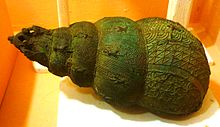Igbo
art was [is] highly diversified in output, inspiration, resemblance, methods
and in the raw material used in the working of art. Though arts maybe made to
give the same general appearance depicting ethnic identity, the process of the
production of such varies.
In
ancient Igbo society, Igbo art was a lucrative family business. Drum carving,
mask carving, smiting in both gold and bronze, raffia weaving amongst many were
the trademarks of Igbo art. Each practicing family had its trade secrets and
rituals that facilitated the successful production of various arts.
While
you maybe thinking majorly of the face masks and representations of alusi[idols] you may have seen somewhere else, the art and crafts of the Igbos
extend far beyond that towards dance, bodily carvings, ritual songs and sacred
writings.
Now
you maybe surprised at the mention of sacred writings and you’ll be asking
yourself “I thought the Igbos had no official system of putting down words?”
Your
line of thought is perfectly okay as I thought the same before I started asking
questions on my heritage. In one of my discussions with an Igbo elder [90 years
of age then and now of blessed memory] he spoke of some cults especially those
of Kamalu having secret ways of representing okwu [speech]. Sadly, either these cults were so secretive with
what they had or they didn’t simply find it necessary to put people through
writing lessons.
Today
the Igbos have developed and are still developing better ways of representing
native Igbo speech.
- Igbo Masks and Drums
In
Igbo society, the carving drums especially for celebration and ritual purposes
was a highly sought after task and one held with honour. Families practicing the
trade would patronize the ezemmuo [priest]
of a particular deity whose feast was coming up to give them the job of carving
great drums that would herald the arrival of the occasion.
The
act of beating the drum [iti igba]
was also one that would be held by the family that carved the drum. So, not
only was the family to master the applied arts, the mastery of the performing arts
was also a necessity.
In
many Igbo communities, the befitting burial of a great man—maybe an Ozo title
holder—was a call to communal action. New drums were carved in honour of the
dead [depending on his financial status], and masks created for mmonwu [masquerades] representing the
spirits of his ancestors. Another example of the the application the carving
art was during [Iri Ji] the New Yam
festival held in every major Igbo community every August to celebrate the successful
harvest of yam [the Igbo’s staple crop].
The
application of mask carving serves almost the same purpose as the drum. The masks
were representational art of spirits [mmuo]
and ancestors [egwugwu] meant to
guide the celebration and bestow blessings on it. Example of popular masks are agboho mmuo and eze nwanyi.
- Bodily Carvings
The
Igbos also made artistic body carvings on their faces to depict loyalties or for
worship, cult or purely decorative purposes. These carving known as uchi were done using a blade by a
skilled carver. After the carving, herbs were rubbed into the wounds to
facilitate healing, prevent infection and facilitate scarring.
- Architectural Art
The
Igbos were skilled in building of edifices with locally available raw materials
to match their climates. But we are more interested in the artistic side of
things, You would not like it if I started giving you the details of my
grandfather’s hut or start explaining the positioning of clothes in my late
grandmother’s small house.
The
Mbari houses of the Owerre [Owerri] Igbo were the one of the best artistic cum architectural
accomplishments. The Mbari houses depicted nature and the deities responsible
for it.
The
normal Mbari house showed Ani/Ala sitting with Amadioha [Kamalu] beside her. Then
seated around them would be animals, humans and other minor deities. The walls
of the Mbari houses were richly decorated in line arts and geometric designs.
Also
among architectural designs of repute were the Nsude Pyramids of the Northern
Igbo. These pyramids represented the Heaven-Earth-Underworld connection present
in almost all religions. These can be found in modern day Enugu state.
- Uli
Uli
was the trending decorative agent back then. Just like our mascara and foundation
powder now. Women drew elaborate and artistic patterns on their bodies with uli
[locally manufactured black body paint] for special events and purposes. These marks
varied from geometric designs to actual representation of nature like then drawing
of leaves or simple representation of animals and insects.
- Igbo-Ukwu Art
Igbo-Ukwu
art is said to have flourished in Igboland in the ninth century AD. Igbo-Ukwu
art centred around the beating, smelting of bronze. One point of remark is the
use of the lost-wax casting techniques in the making of bronze images and
sculptures. The lost-wax technique has been scarcely employed by African people
in casting of bronze. However, the Igbo-Ukwu Igbos mastered the methods and
produced thousands of sculpture which have found themselves all over museums worldwide.














COMMENTS